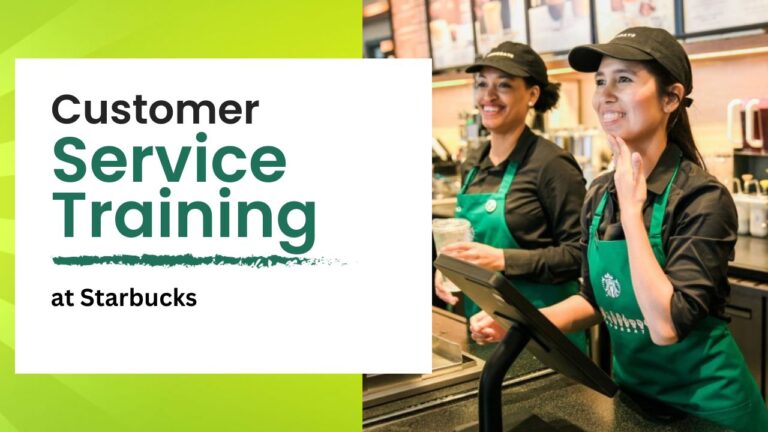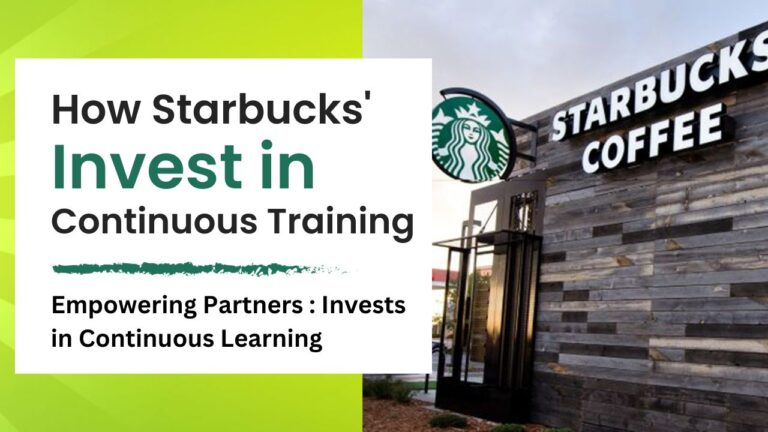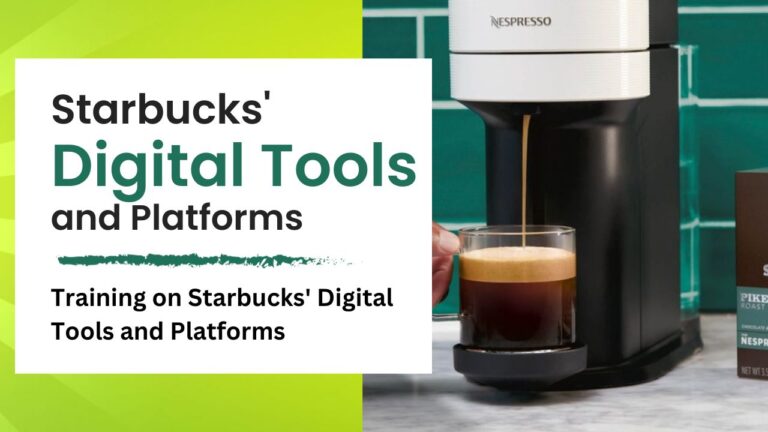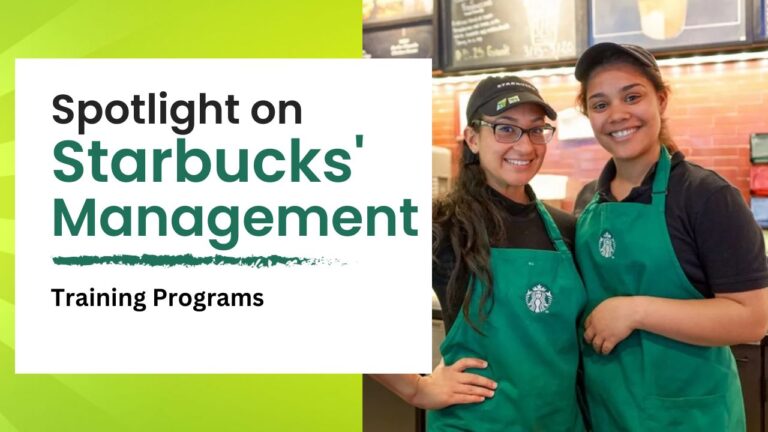From Beans to Business: Starbucks’ Leadership Development Pathways
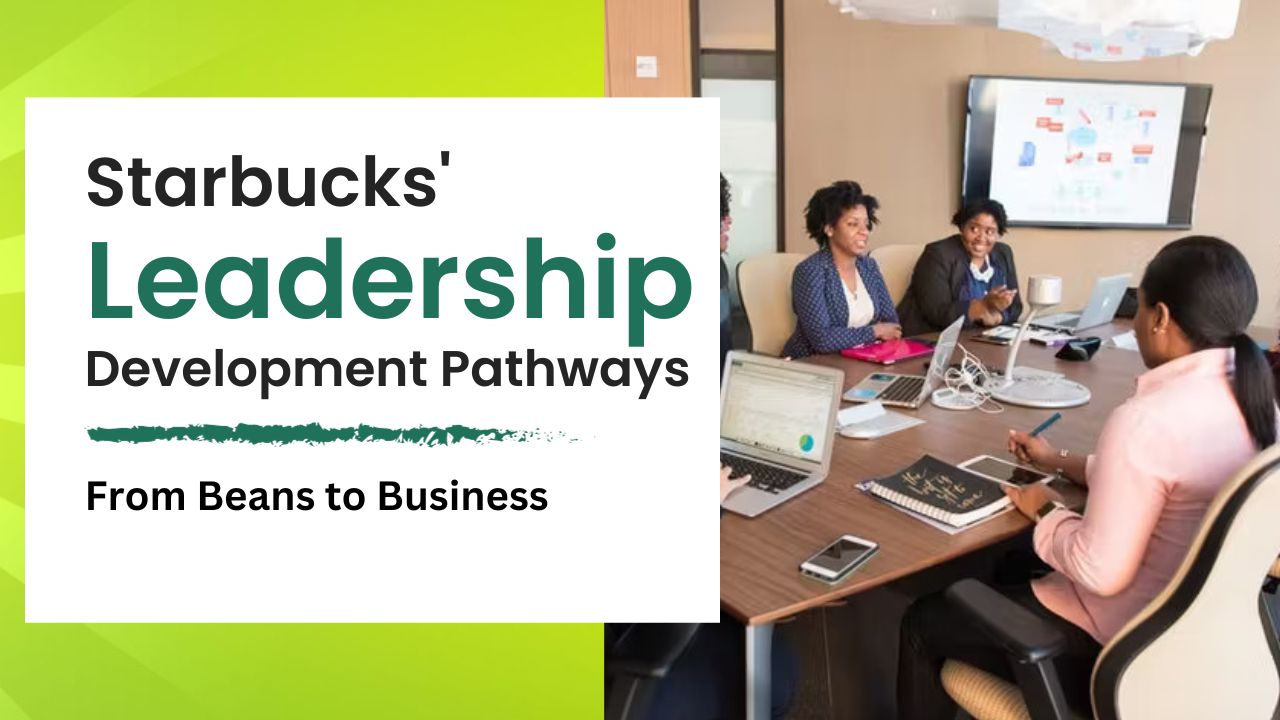
Starbucks places a high value on leadership and its development within the company. Recognizing that leadership is crucial for its growth and success, Starbucks has implemented comprehensive initiatives to nurture and develop leaders at all levels. These initiatives are designed to align with Starbucks’ core values and business goals, fostering a culture of leadership that benefits both employees and the company. Such development is crucial for managing Starbucks partner hours effectively, ensuring that leaders can balance their roles and responsibilities efficiently. Starbucks’ commitment to leadership development reflects its understanding that great leaders are essential for maintaining its position as a global coffee leader.
The Importance of Leadership in Starbucks’ Growth
Starbucks’ Philosophy on Leadership
Starbucks believes that strong leadership is fundamental to its success. The company’s philosophy emphasizes empowering employees, fostering collaboration, and driving innovation. Leaders at Starbucks are expected to embody these principles, creating a positive work environment and guiding their teams towards achieving company objectives. This philosophy is integral to managing My partner hours, ensuring that all employees are led effectively and efficiently.
Evolution of Leadership at Starbucks
Over the years, Starbucks’ approach to leadership has evolved to meet changing market demands and internal growth. Initially focused on operational excellence, the leadership style has expanded to include a stronger emphasis on sustainability, community involvement, and innovation. This evolution mirrors the company’s growth from a local coffee shop to a global brand. Leaders at Starbucks have been pivotal in this transformation, steering the company through various stages of growth and change.
Overview of Starbucks’ Leadership Development Pathways
Key Components of the Program
Starbucks’ leadership development pathways comprise various components, including mentorship programs, training workshops, and online courses. These elements are designed to provide a comprehensive learning experience, catering to the diverse needs of Starbucks’ workforce. The program not only develops essential leadership skills but also focuses on personal growth and career development. Starbucks ensures that these opportunities are accessible to all partners, regardless of their Starbucks gift card balance, reflecting its commitment to inclusive growth.
Objectives and Goals
The main objective of Starbucks’ leadership development pathways is to cultivate a strong pool of leaders who can drive the company’s future growth. The goals include enhancing leadership skills, promoting Starbucks’ values, and preparing employees for advanced roles within the company. Starbucks aims to create leaders who are not only skilled in management but also embody the company’s ethos. Ultimately, the program strives to ensure that every leader is well-equipped to handle their responsibilities, including efficiently managing Check Starbucks card balance tasks and customer interactions.
Starbucks’ Leadership Development Pathway
Howard Schultz: From Director to Global Leader
1. Career Journey: Howard Schultz’s transformation of Starbucks started in his role as Director of Retail Operations and Marketing. His ascension to CEO and Chairman was marked by his unique vision, deeply influenced by his experiences and Starbucks’ culture.
2. Leadership Style: Schultz’s leadership is defined by empathy, community engagement, and a focus on the customer. This approach, ingrained in Starbucks’ ethos, helped shape the brand’s global presence and reputation.
Rosalind Brewer: Breaking Barriers in Leadership
- Historic Achievement: Rosalind Brewer’s role as CEO of Starbucks, marking her as the first woman and African American to hold this position, represents Starbucks’ commitment to diversity in leadership.
- Diverse Experience: Before joining Starbucks, Brewer had a significant impact in various leadership roles at Walmart and Sam’s Club, bringing a wealth of experience to Starbucks.
Craig Russell: A Story of Internal Growth
- Beginning as a Barista: Craig Russell’s Starbucks journey began in 1995 as a barista. His dedication and passion for coffee were the stepping stones in his career.
- Career Advancement: Russell’s progression to Chief Product Officer was facilitated by his active engagement in Starbucks’ training and development programs, showcasing the company’s support for career growth from within.
Pathways in Starbucks’ Leadership Development
Starbucks’ leadership development pathways are a comprehensive framework designed to cultivate effective leadership at every level of the company. From entry-level managers to senior executives, these pathways provide structured training and growth opportunities. They reflect Starbucks’ commitment to nurturing leaders who not only understand the operational aspects of the business, such as managing Starbucks partner hours but also embody the company’s core values and strategic vision. This approach ensures a consistent leadership quality across the company, supporting Starbucks’ ongoing success and innovation.
Entry-Level Leadership Opportunities
Training Programs for New Managers
Starbucks offers comprehensive training programs for new managers, meticulously designed to equip them with essential management skills. These programs extensively cover various aspects of Starbucks’ operations, with a strong emphasis on customer service and team management. Consequently, the training ensures that new managers can effectively handle their responsibilities, including managing Starbucks partner hours. Furthermore, these programs serve as a foundational step in Starbucks’ leadership development pathway, setting the stage for further growth and advancement, and establishing a solid base for future leadership roles within the company.
Mentorship and Support for Emerging Leaders
For emerging leaders at Starbucks, mentorship and support are key components of their development. New leaders are paired with experienced mentors who provide guidance and advice. This mentorship helps them navigate the complexities of their roles and fosters personal growth. Such support is crucial in helping new leaders manage their My partner hours effectively, ensuring a smooth transition into leadership roles.
Mid-Level Leadership Development
Advanced Training Modules
Mid-level leaders at Starbucks have access to advanced training modules. These modules delve deeper into the nuances of leadership and management, focusing on strategic thinking and problem-solving. They are designed to challenge and inspire leaders, pushing them to achieve greater levels of success. These training modules are integral to developing the skills necessary for managing more complex aspects of the business, like understanding Starbucks gift card balance dynamics.
Cross-Functional Skill Development
Cross-functional skill development is a critical aspect of mid-level leadership training at Starbucks. These programs encourage leaders to broaden their understanding of different areas of the business. This holistic approach fosters versatility and adaptability, key traits for effective leadership. Such cross-functional training is vital for leaders who need to understand various aspects of the business, including how to Check Starbucks card balance systems and customer interactions.
Senior Leadership Growth Strategies
Executive Training Programs
For senior leaders, Starbucks offers executive training programs. Specifically, these high-level programs focus on leadership excellence and strategic decision-making. Tailored to the needs of senior management, these programs are instrumental in helping leaders refine their skills for higher-level strategic roles. Additionally, executive training is crucial for leaders who are responsible for making key decisions that impact the entire company. This includes strategic initiatives related to Starbucks partner hours, underlining the importance of these programs in preparing leaders for pivotal roles within the organization.
Strategic Leadership and Decision-Making
Strategic leadership and decision-making are central to Starbucks’ senior leadership growth strategies. Primarily, these elements of training emphasize long-term planning, critical thinking, and effective decision-making. As a result, senior leaders are trained to identify and capitalize on opportunities, while also adeptly navigating challenges. This strategic approach is essential, particularly for senior leaders, who must make informed decisions that affect various facets of the business. These aspects range from developing innovative marketing strategies to managing Starbucks gift card balance systems, demonstrating a comprehensive and forward-looking leadership style.
Read Related Posts:
Supporting Tools and Resources
Starbucks leverages a variety of supporting tools and resources to enhance its leadership development programs. These tools are meticulously designed to complement the learning pathways, providing a rich and accessible learning environment for all partners. Consequently, from online platforms to community-building activities, Starbucks ensures that its leaders have the resources they need to succeed. Furthermore, this comprehensive support system plays a crucial role in maintaining the high standards of leadership that Starbucks is renowned for, demonstrating the brand’s commitment to continuous improvement and excellence in leadership development.
Online Learning Platforms and Resources
Digital Tools for Leadership Training
Starbucks integrates digital tools into its leadership training, offering a flexible and interactive learning experience. These tools include:
- E-learning modules: Interactive and engaging content tailored to various leadership levels.
- Webinars: Live sessions with experts, covering key leadership topics.
- Virtual classrooms: Real-time, collaborative learning environments.
- Mobile apps: On-the-go access to training materials, perfect for managing Starbucks partner hours.
Access to External Educational Content
Starbucks provides access to a wide range of external educational content, supporting continuous learning:
- Partnerships with educational institutions: Access to specialized courses and materials.
- Online libraries and databases: A vast repository of knowledge on various subjects.
- Guest lectures and seminars: Insights from industry leaders and experts.
- Professional development courses: Opportunities to gain additional qualifications.
Networking and Community Building
Internal Networking Opportunities
Internal networking is a key aspect of Starbucks’ leadership development, offering:
- Peer-to-peer learning sessions: Sharing experiences and best practices.
- Leadership forums and conferences: Platforms for discussion and collaboration.
- Team-building events: Strengthening connections within the company.
- Social media groups: Online communities for continuous engagement and support.
Building a Community of Leaders
Starbucks focuses on building a robust community of leaders through:
- Mentorship programs: Pairing emerging leaders with experienced mentors.
- Leadership clubs and societies: Groups focused on specific leadership themes.
- Collaborative projects: Encouraging teamwork and joint problem-solving.
- Alumni networks: Keeping former leaders connected to Starbucks’ community.
Performance Evaluation and Feedback
Regular Assessment and Reviews
Performance assessment and reviews are integral to Starbucks’ leadership development:
- Periodic performance evaluations: Regular assessments to monitor progress.
- 360-degree feedback: Comprehensive feedback from peers, subordinates, and superiors.
- Leadership scorecards: Tracking key metrics and achievements.
- Developmental checkpoints: Milestones to assess learning and growth.
Constructive Feedback and Improvement Plans
Constructive feedback and personalized improvement plans are essential for continuous growth:
- Tailored feedback sessions: Focused on individual strengths and areas for improvement.
- Action plans: Customized strategies for leadership development.
- Coaching sessions: One-on-one guidance for personal and professional growth.
- Follow-up meetings: Ensuring continuous progress and addressing challenges.
Impact and Success Stories
Starbucks’ leadership programs have significantly impacted the company, as evidenced by various success stories and measurable outcomes. Initially, these programs have not only enhanced leadership capabilities within the company but also fostered a culture of growth and excellence. Subsequently, the success stories from these programs highlight the transformative power of effective leadership development. Furthermore, they showcase the personal and professional growth of Starbucks leaders, underscoring the profound and positive influence these programs have had on the overall development and success of the company’s leadership.
Measuring the Impact of Leadership Programs
Success Metrics and Key Outcomes
- Increased Leadership Effectiveness: Improvement in leadership skills as reflected in performance metrics.
- Enhanced Employee Engagement: Higher engagement scores indicating effective leadership.
- Improved Customer Satisfaction: Positive feedback from customers, partly attributed to better leadership at stores.
- Efficiency in Managing Starbucks partner hours: More effective scheduling and management of staff hours.
Feedback from Participants
- Positive Responses: Participants report enhanced skills and confidence in leadership roles.
- Career Advancement: Many note opportunities for promotion and increased responsibilities.
- Personal Development: Leaders express personal growth and improved problem-solving abilities.
- Balancing My partner hours: Leaders find better ways to balance work and personal development.
Case Studies of Leadership Success
Transformational Leadership Examples
- Store Managers: Stories of managers transforming store performance and morale.
- Regional Leaders: Examples of leaders enhancing regional operations and sales.
- Innovative Initiatives: Leaders who have initiated successful new programs or strategies.
- Customer Experience: Leaders improving the overall Starbucks gift card balance experience for customers.
Personal Growth Stories of Starbucks Leaders
- From Barista to Manager: Accounts of employees climbing the leadership ladder.
- Overcoming Challenges: Leaders who triumphed over personal and professional hurdles.
- Inspiring Teams: Stories of leaders who have motivated their teams to achieve excellence.
- Strategic Decisions: Leaders making impactful decisions, including efficient ways to Check Starbucks card balance and enhance operations.
Future Directions in Leadership Development
Starbucks is poised to evolve its leadership development programs to meet the demands of a rapidly changing global market. As the company looks to the future, it is focusing on adapting its leadership strategies to anticipate and effectively overcome new challenges. This proactive approach is crucial, not only for maintaining Starbucks’ position as a leader in the coffee industry but also in creating a sustainable leadership pipeline. Furthermore, the future of Starbucks’ leadership development lies in its ability to innovate and adapt, thereby ensuring that leaders are well-equipped for both current and future challenges, reflecting the brand’s dynamic and forward-thinking strategy.
Adapting to Future Challenges
Incorporating New Leadership Trends
Starbucks recognizes the importance of staying ahead of leadership trends. As the business world evolves, correspondingly, so too must the methods and strategies used to develop leaders. Consequently, Starbucks is proactively integrating emerging trends such as digital leadership, remote team management, and inclusive leadership practices. These trends are essential, particularly for ensuring that Starbucks’ leaders can effectively manage diverse teams. Moreover, they facilitate adaptation to the changing dynamics of Starbucks partner hours, reflecting a proactive and forward-thinking approach in their leadership development. This strategic foresight is crucial in maintaining Starbucks’ position as a leader in the industry, ready to embrace and leverage changes for continued success.
Preparing for Global Leadership Challenges
Global challenges require a new breed of leaders, and Starbucks is actively preparing its leaders to meet these challenges head-on. Initially, the focus is on cultivating leaders who are adept at navigating complex global markets, understanding different cultural dynamics, and responding effectively to international business trends. Consequently, this preparation is vital for leaders who must make decisions that affect Starbucks on a global scale, including strategies related to My partner hours in various regions. Furthermore, this forward-thinking approach ensures that Starbucks leaders are well-equipped to handle the intricacies and dynamics of a rapidly evolving global business landscape.
Long-term Vision for Starbucks’ Leadership Development
Sustainable Leadership Goals
Starbucks’ long-term vision for leadership development prominently emphasizes sustainability. Importantly, the company aims to build a continuous pipeline of leaders who are not only skilled in business management but also deeply committed to upholding Starbucks’ values and sustainability goals. Additionally, this vision includes creating leadership practices that contribute to both the company’s success and the planet’s well-being. Moreover, it encompasses initiatives like managing Starbucks gift card balance in environmentally friendly ways, demonstrating a comprehensive approach to sustainable business practices.
Continuous Learning and Adaptation
The cornerstone of Starbucks’ long-term vision is continuous learning and adaptation. Significantly, Starbucks understands that effective leadership requires ongoing development and the ability to adapt to new situations. Consequently, the company is committed to providing its leaders with continuous learning opportunities, tools, and resources. This commitment is particularly crucial for leaders who need to stay up-to-date with the latest business practices, including how to efficiently check Starbucks card balance and implement new technologies, ensuring they remain at the forefront of industry advancements.
Conclusion
Starbucks’ approach to leadership development reflects its steadfast commitment to evolving and adapting to the changing landscape of global business. Initially, by focusing on incorporating new leadership trends, Starbucks prepares for the dynamic challenges of the global arena. Additionally, by maintaining a long-term vision for sustainable leadership and continuous learning, the company is ensuring that its leaders are well-equipped for future challenges. Furthermore, this strategic approach to leadership development is fundamental to Starbucks’ ongoing success and its ability to meet the diverse needs of its partners and customers worldwide, emphasizing the brand’s forward-thinking and adaptive nature.

